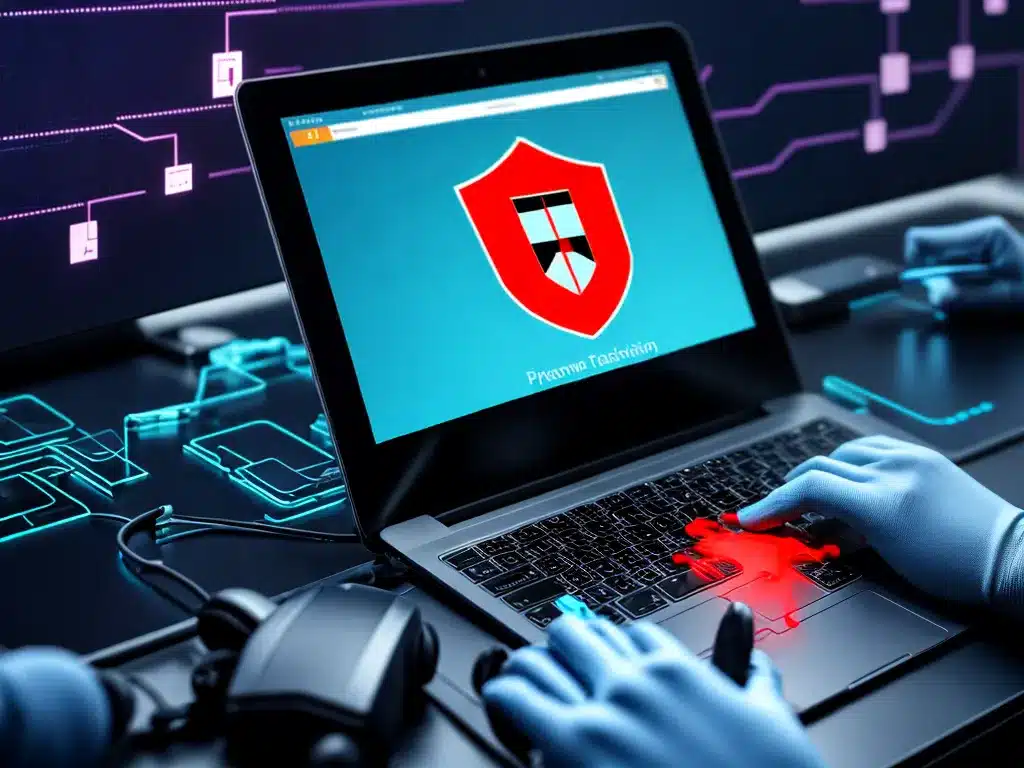
What is Malware?
Malware, short for “malicious software”, refers to any program or application designed to cause damage or gain unauthorized access to a computer system. Malware comes in many forms, including viruses, worms, Trojan horses, spyware, adware, ransomware, and more. Malware is typically installed without the user’s knowledge or consent and can have a wide range of negative effects, from displaying unwanted pop-up ads to stealing sensitive personal information to completely taking over a system’s operation.
Some common types of malware include:
- Viruses – Malware that replicates itself and spreads to other computers by attaching itself to files or programs. Viruses can delete files, slow down devices, and even render systems unusable.
- Worms – Malware that spreads itself automatically over networks without any human interaction, often exploiting vulnerabilities. Worms can consume bandwidth and crash systems.
- Trojan Horses – Malicious programs disguised as legitimate software. Trojans can give attackers remote access and control over infected systems.
- Spyware – Malware that secretly gathers data and information about a user and transmits it to third parties. Spyware can monitor keystrokes, steal passwords, and track browsing habits.
- Ransomware – Malware that encrypts or blocks access to data or systems until a ransom is paid. Ransomware can completely paralyze organizations.
How Malware Spreads
Malware typically spreads through the following vectors:
- Email attachments – Malware is often distributed through email attachments disguised as legitimate files. Opening or downloading these infected attachments can trigger malware installation.
- Infected websites – Websites compromised by malware can automatically download and install malicious programs onto visitor devices through exploits and drive-by downloads.
- External devices – Portable USB drives, CDs/DVDs, and other removable media can harbor malware. Autorun features can activate malware when connected.
- Social engineering – Attackers can trick users through phishing emails or fraudulent links into downloading malware disguised as legitimate software or files.
- Network propagation – Worms and other malware can self-replicate and spread across networks by exploiting vulnerabilities in protocols, programs, and operating systems.
- Third-party app stores – Many third-party app stores contain malware-infected apps and programs, especially on mobile platforms. Downloading apps outside official stores is risky.
Signs of a Malware Infection
Some common signs that a device may be infected with malware include:
- Degraded performance – Malware infections can drastically slow down systems, cause frequent freezes and crashes, or prevent applications and programs from running properly.
- Unusual pop-ups – Malicious pop-up ads, messages, and other unsolicited windows appearing frequently can indicate adware or other malware.
- Hijacked browsers – Changes to browser homepages, new toolbars, or redirection to unwanted sites may be a sign of browser hijackers.
- Unknown processes and services – Strange applications running in the background or unusual services starting up on boot that do not belong to known software could signify malware.
- Increased data usage – Malware often communicates with command and control servers, sending and receiving data. Noticeable spikes in bandwidth usage may suggest a malware infection.
- Disabled security tools – Some malware actively disables or tampers with antivirus software, firewalls, and other security tools to avoid detection. Missing or non-functioning security programs may indicate compromise.
Preventing Malware Infections
There are several best practices that individuals and organizations should follow to prevent malware infections:
Keep All Software Updated
- Maintain up-to-date operating systems, software, and apps on all computers and devices. Updates often patch vulnerabilities that malware exploits. Enable automatic updates where possible.
Exercise Caution with Emails and Links
- Avoid opening email attachments or clicking on links from unknown or suspicious senders. Validate legitimacy before enabling content or downloads.
Use Trustworthy Software Sources
- Only download and install apps and programs from official sources like app stores. Avoid untrusted third-party download sites which frequently distribute malware.
Install and Maintain Antivirus Software
- Use reputable antivirus programs to detect and remove malware. Schedule regular scans to catch threats before they spread. Keep virus definitions continuously updated.
Enable Firewalls
- Use firewalls to restrict and monitor incoming and outgoing network traffic. This can prevent malware communication and block known malicious sites/IPs.
Backup Critical Data
- Maintain regular backups of important files. This provides recovery options if ransomware encrypts data. Store backups disconnected from the network to prevent malware reaching backup data.
Be Wary of External Devices
- Avoid autorun features on external USB drives and disable them if possible. Only connect removable media from trusted sources.
Educate Employees on Malware Risks
- Establish security awareness training to teach employees how to identify and avoid malware threats through email, browsing, and day-to-day activities.
Limit User Privileges
- Follow the principle of least privilege. Users should only have access to data and systems required for their specific role to limit damage from infections.
Detecting and Removing Malware
If a malware infection is suspected, the following steps can be taken:
- Run a full system scan using updated antivirus software to identify and quarantine any malware present.
- Check running processes and services for any unusual or unknown programs which may indicate malware. End suspicious processes.
- Reboot the system into safe mode and run scans to remove malware without it interfering or hiding itself.
- Review browser settings, extensions, and add-ons for unwanted changes or plugins added by malware. Remove any suspicious browser extensions/add-ons.
- Check the file system for unusual or hidden files/folders, as malware commonly hides itself. Scan these items.
- Restore any disabled or compromised security tools like antivirus software and firewalls. Update their malware definitions.
- Reset browser settings to defaults to undo any malicious changes.
- Change account passwords after removing malware, as credentials may have been compromised.
- In severe infections, a full system reset/reinstall may be required if malware cannot otherwise be eliminated.
Staying vigilant and using comprehensive security practices are key to protecting against constantly evolving malware threats. Proactive prevention combined with early detection offers the best defense against malware infections.












